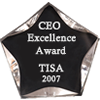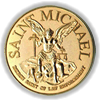Search Engine Optimization (SEO) and Search Engine Marketing (SEM) can be confusing concepts to grasp. Both terms are often mixed, which makes matters even worse. Although SEO and SEM work hand in hand, they are not the same term. In this post, we will help shed some light on the matter by identifying each one of them and clarifying the difference between them.
What is SEO?
SEO (Search engine optimization) is the process of affecting the visibility of a website or a web page in a search engine's unpaid (often referred to as “natural”, “organic” or “earned” results”.
In other words, SEO is a tactic used to give your business website greater exposure via search engines. It involves application optimization methods, using the right keywords, creating rich titles, and building quality links from relevant websites in order to generate credibility and authority to give your site a good chance to be listed on the firsts pages of organic search results when people use Google or some other search engine.
In short, SEO is key to attract new business: the amount of qualified visitors your website receives is directly related to your SEO strategies.
Main components of SEO
Search Engine Optimization has two major components: On-Page and Off-Page. On-Page SEO refers to settings you can apply on the website so that it is optimized for search engines, while Off-Page SEO refers to activities outside the boundaries of the webpage.
What is SEM?
SEM (Search Engine Marketing) is as follow: “A form of Internet marketing that involves the promotion of websites by increasing their visibility in search engine result pages primarily through paid advertising”.
This process spans the creation of campaigns and measuring results: you set a budget and expect a return on that investment (ROI). For that reason SEM often uses pay-per-click (PPC), a bidding model that charges advertisers only when someone clicks on their ad, and clearly involves paid advertisements such Adwords or any other method of online advertising.
In short, it is the quickest method to get your website to show up on the first page of search engine results. These search results display as sponsored ads on the top or side of the organic search results.
Main components of SEM
Other than Search Engine Optimization, Search Engine Marketing includes the use of paid search, such as pay-per-click (PPC) listings and advertisements. Most of the time, SEM strictly includes PPC campaigns and activities, but if you use SEO and paid search, that falls under SEM efforts.
Choosing The Best Strategy
Many people debate whether one is better than the other, but should not be viewed as competing tactics, but rather as complementary.
I would say that organic SEO is the best approach, but there are many situations where PPC makes more sense for example if you want immediate visibility, but it would be unwise not even touch search engine optimization. Although organic SEO takes longer to show results, in the end it will be less costly and you will establish a search credibility that you might not establish with PPC.
When it comes to choosing the best tactic, it is important to evaluate your specific needs, but be sure SEO and SEM can be a strongly powerful combination. They are complementary, not competitors.
Are you looking to use SEO or SEM to help improve your search ranking? We love analyzing sites and identifying areas where we can help you grow your business. If you’re ready to increase your online visibility, drive qualified traffic to your site, and convert that traffic into leads, then feel free to contact us.

About Andrea Picaso
Andrea is a SEO/ SEM specialist with more than 10 years of experience positioning Websites for local and global Customers
Nowadays Andrea specializes in leading the SEO/ SEM department of TISA, continuously researching about new positioning algorithms to obtain a better performance and rating in a lower time.
Beyond her technical knowledge Andrea enjoys listening Music from the 90's and Painting.













